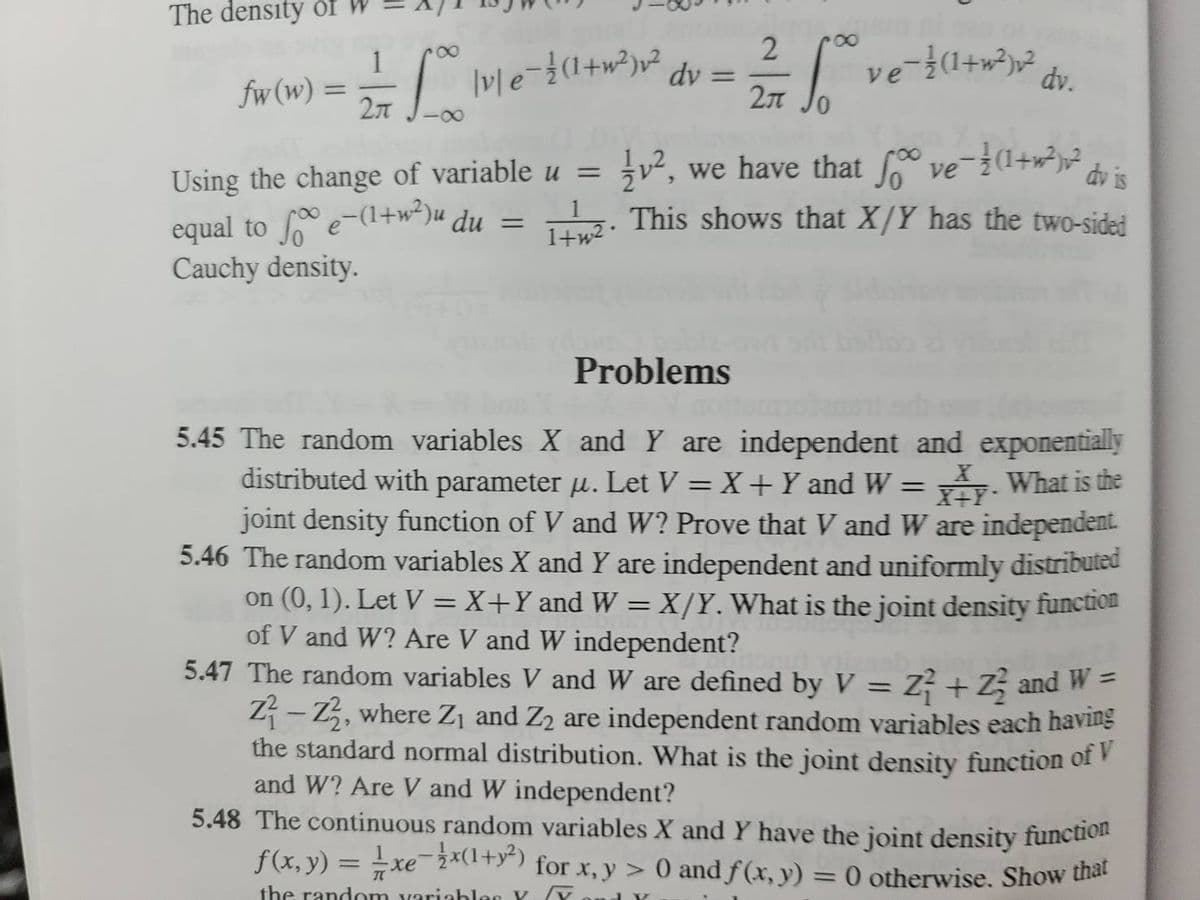Problems 5.45 The random variables X and Y are independent and exponentially distributed with parameter u. Let V = X + Y and W = yy. What is the joint density function of V and W? Prove that V and W are independent. 5.16 Th
Problems 5.45 The random variables X and Y are independent and exponentially distributed with parameter u. Let V = X + Y and W = yy. What is the joint density function of V and W? Prove that V and W are independent. 5.16 Th
A First Course in Probability (10th Edition)
10th Edition
ISBN:9780134753119
Author:Sheldon Ross
Publisher:Sheldon Ross
Chapter1: Combinatorial Analysis
Section: Chapter Questions
Problem 1.1P: a. How many different 7-place license plates are possible if the first 2 places are for letters and...
Related questions
Question
question number 5.45

Transcribed Image Text:The density of
fw (w) = = = = 100 \v\ e = {(1 + ³²) ²2,
fu
2π
dv =
Using the change of variable u =
equal to fe-(1+²) u du =
Cauchy density.
2
7/7 5.0° V
2π
ve¯ {(1+w²}x²
dv.
dy
1², we have that f ve¯ {(1+x²)x² dv is
12. This shows that X/Y has the two-sided
Problems
X
X+Y*
5.45 The random variables X and Y are independent and exponentially
distributed with parameter u. Let V = X + Y and W = What is the
joint density function of V and W? Prove that V and W are independent.
5.46 The random variables X and Y are independent and uniformly distributed
on (0, 1). Let V = X+Y and W = X/Y. What is the joint density function
of V and W? Are V and W independent?
5.47 The random variables V and W are defined by V = Z² + 2 and W =
Z-Z2, where Z₁ and Z₂ are independent random variables each having
the standard normal distribution. What is the joint density function of V
and W? Are V and W independent?
5.48 The continuous random variables X and Y have the joint density function
f(x, y) = xe-x(1+y²) for x, y > 0 and f(x, y) = 0 otherwise. Show that
TC
the random variables Y. (Y
Jy
Expert Solution
This question has been solved!
Explore an expertly crafted, step-by-step solution for a thorough understanding of key concepts.
Step by step
Solved in 2 steps with 2 images

Recommended textbooks for you

A First Course in Probability (10th Edition)
Probability
ISBN:
9780134753119
Author:
Sheldon Ross
Publisher:
PEARSON


A First Course in Probability (10th Edition)
Probability
ISBN:
9780134753119
Author:
Sheldon Ross
Publisher:
PEARSON
